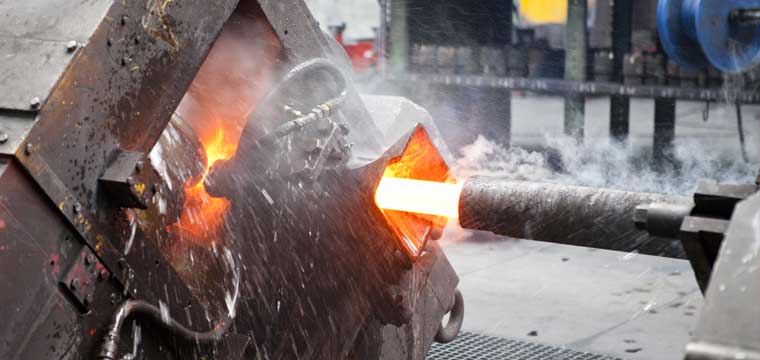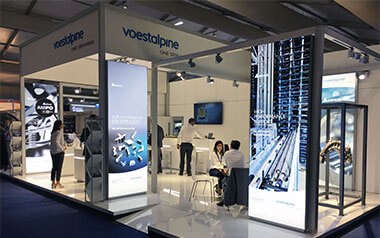The main component of nickel-based alloys is the element nickel. Nickel-based alloys are mainly used as high-temperature materials and as chemically resistant materials, whereby the resistance to the high operating temperatures and the ambient conditions is determined in particular by the alloying elements chromium, molybdenum, cobalt, tungsten and aluminium, among others. On the one hand, the alloying elements are responsible for solid solution hardening of the austenitic Ni solid solution, but on the other hand they are also used for precipitation hardening and particle strengthening. Depending on the required properties, nickel-based alloys often contain more than ten different alloying elements.
The permanent operating temperatures of nickel-base alloys are up to about 1,100 °C.
Nickel-iron, nickel-iron-chromium, nickel-chromium, nickel-molybdenum-chromium and nickel-chromium-cobalt alloys are used in particular. Most nickel alloys are classified according to international standards.
Nickel materials are used in a wide range of applications, especially in
– in the chemical industry for process engineering
such as condenser tubes, boilers, heat exchangers, valves and pumps,
valves and pumps
– Aerospace (e.g. engines, turbines, fasteners)
– Automotive industry (e.g. valve technology, catalytic converters)
– Seawater-resistant components for desalination plants
and in shipbuilding
– Power generation (e.g. power plant generators)
– Oil and gas production (e.g. drilling tools)
– Environmental protection and waste management (e.g. flue gas
desulphurisation plants, waste incineration plants,
seawater desalination plants, etc.
Nickel-based superalloys refer to alloys with a special composition that are produced specifically for high-temperature applications (e.g. in engine construction).
The main advantage of nickel-based superalloys is their creep and fatigue strength at high temperatures. From about 550 °C, they are superior to high-temperature steels in this respect. Precipitation hardening by intermetallic phases means that nickel-base superalloys can be used up to temperatures of 1,100°C. The properties are generally influenced by the creep and fatigue strength of the nickel-base superalloys. The properties are usually achieved by alloying with aluminium and/or titanium and niobium. The resulting Ni3[Al,Ti, Nb] precipitates take on a characteristic block-like structure at higher alloy contents. In addition, creep is prevented by thermodynamically controlled grain boundary networks of M23C6 carbides and other phases.
Since the corrosion resistance of the alloys is also very high due to the formation of a very dense oxide layer, these materials are the first choice for construction materials in gas turbines of power plants and in aircraft turbines.
Depending on the requirements and the alloying situation, nickel alloys are preferably melted in air in electric arc furnaces, sometimes also in vacuum induction melting processes, especially if they contain high contents of oxygen affine elements, e.g. Ti and Al. This is usually followed by remelting using the electroslag remelting process (ESU) or the vacuum arc furnace process (VLBO) to improve homogeneity and the degree of purity. The chemical composition in general often requires narrow temperature windows for hot forming and heat treatment.


















